We joined a long line of cars waiting at the border, kilometers before where we thought the border would be. The summer was nearing its end: vacationers were returning home, to go back to work or school. With about nine out of ten license plates being Chilean, I expected the flow to be fast, however it took us over five hours to cross the border: the volume was just too large for the otherwise efficiently working officers. Of course all the necessary procedures had to be followed on both sides; going from immigration to customs, followed by Senasa – the agriculture department that controls the flow of plant and animal products between the two countries. The Chilean side is the most strict concerning the latter: everyone has to submit a declaration form stating which restricted products are in one’s possession. You must declare it all, after which you get checked by either displaying all your baggage on a table and/or opening your car for a search – sometimes with the aid of a dog. That takes time! Now you can imagine how much time it may take to inspect a camper loaded with years worth of necessities. I think even the officials realized this impossible task and instead asked to enter the vehicle, where they opened the fridge and a few cabinets – that was it. Just in case you’re interested, everything must be declared, but declared cheese and dairy like yoghurt or sterilized milk is allowed through, as are cooked or processed products like for instance boiled eggs or liverwurst. But no honey or raisins, fresh fruits and veggies, seeds and raw animal products. Dried beans or lentils could be confiscated. When they find something unacceptable while your declaration form said “nothing”, you will both lose that product and a chunk of money as a fine. Having crossed the Argentina- Chile border several times by now, we boiled our eggs, lentils and potatoes, and processed our raisins by preserving them in pisco (delicious!) Our inspection was done in ten minutes: very fast after five hours waiting!
Once in Chile we had to find some cash and get our Chilean Sim phone cards working again. In the quiet little town of Entre Lagos they couldn’t help; they sent us to Osorno – a mid-sized town where some charming old wooden buildings stood out among the concrete drab. Traffic was hectic and parking hard to find, but we found one accesible parking lot with some space. After some hours of walking from one place to the other, we had what we needed. Then we enjoyed a nice lunch and left town.

We have been reading several books by Isabel Allende. When I read her books “House of Spirits” and “Violetta”, I envisioned some of the tales to play in the area that we remembered from our first visit in 1978 – the lake district around the Osorno Volcano. We headed to Lago Llanquilhue, a lake where many German settlers live, and it shows. Especially the towns of Frutillar and Puerto Varas flaunt chalet-like houses, at times complete with red geraniums in window boxes. We visited the open-air museum Museo Colonial Aleman de Frutillar to get some insight in the life of these settlers. Along with busloads of American Cruise ship tourists we strolled through the gardens and climbed the wooded hillside, we entered some of the furnished houses, the blacksmith’s shop and farm equipment barn, where old agricultural contraptions like an amazing wooden harvest machine were parked, as well as laundry tools that I remember from my youth – from before my mother had her first washing machine.
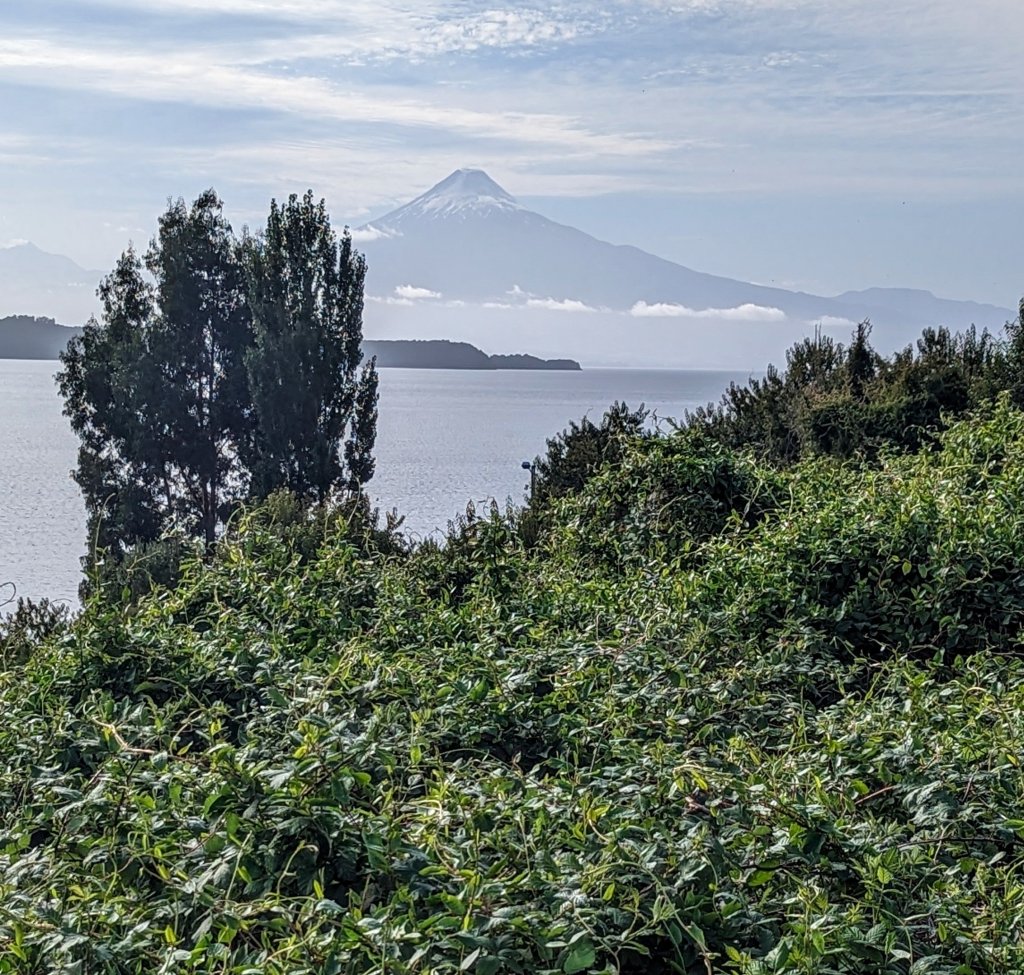

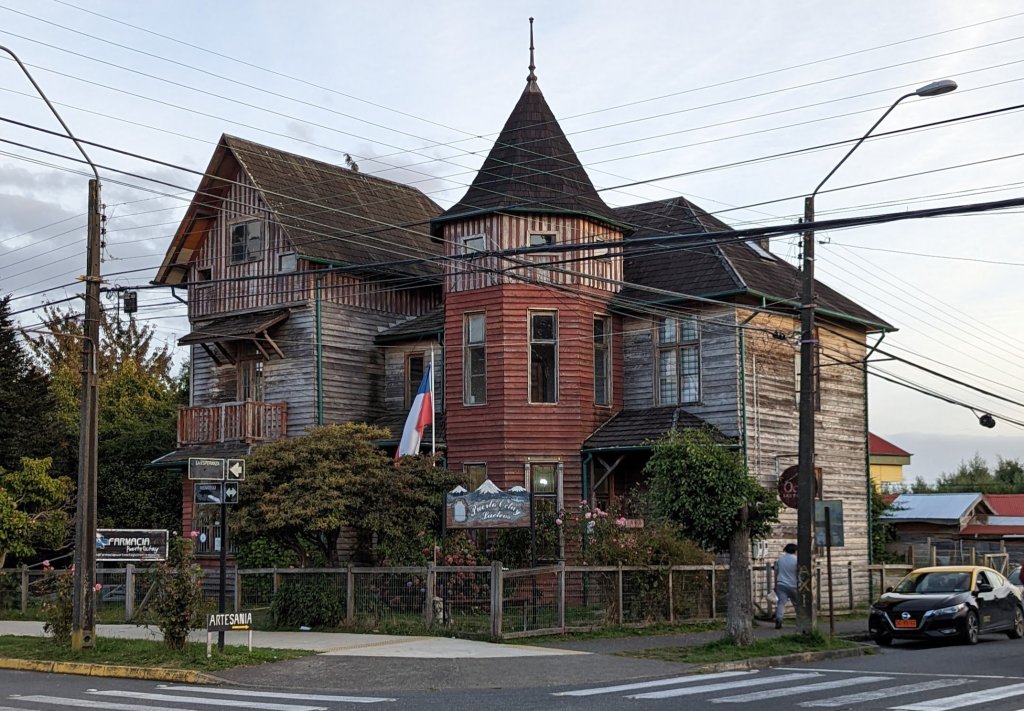





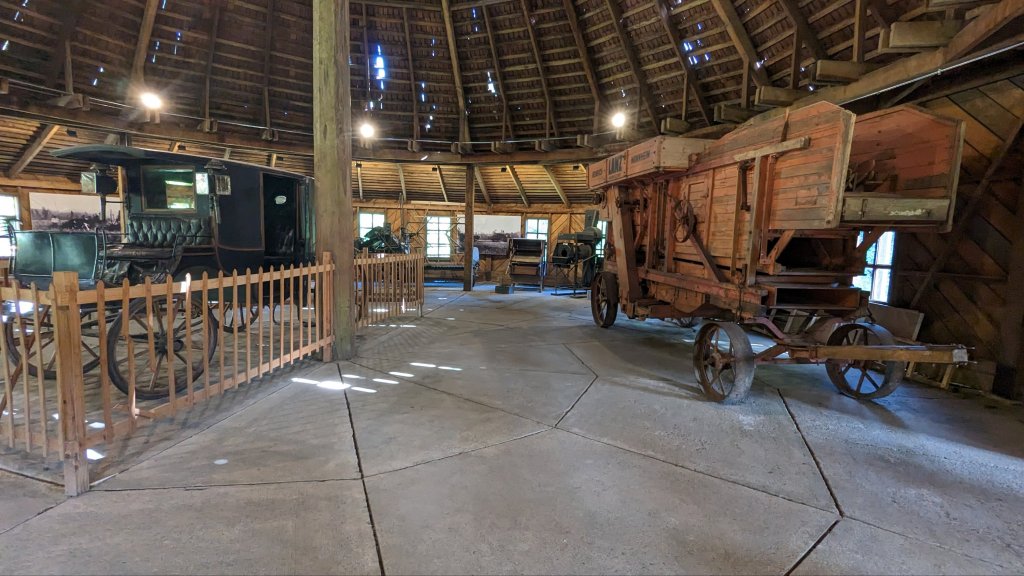
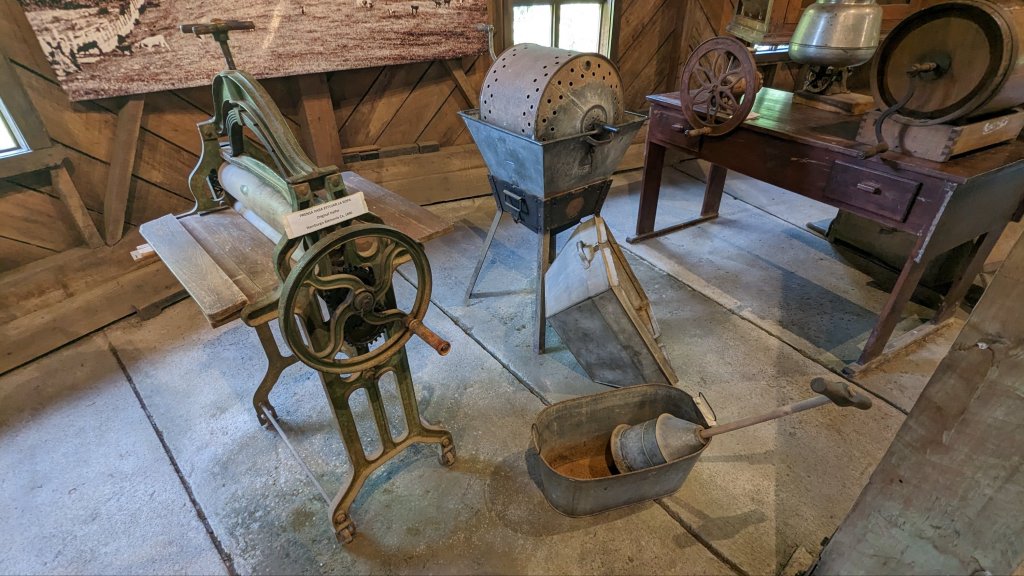


Thijs found it necessary to get our camper serviced in Puerto Varas, the next town over. One garage there had good reviews, so for the next couple of days we camped out on the grounds of that garage. In the end, not everything could be done, so we moved on. We’d heard many people rave about the Island of Chiloé, and even though it meant traveling south again, Thijs really wanted to see it. When we received a message from Mike and Geneva (slowcarfasthouse.com) saying they were in Chiloé, we made plans to meet.


We took the ferry and drove to Quemchi, where we found Mike and Geneva and their two dogs Nica and Pacha along the waterfront of this intriguingly cute little town. They just came back from stocking up on supplies to take to a remote little island, where we all were invited to stay with Thomas – an American who had a sheep farm there, and his girlfriend Teresa. Before nightfall we drove to Quicavi where we should board the ferry the next day.



Thomas came to meet us on the boat, and immediately Thijs and Thomas clicked – we never met him: Mike and Geneva did in Puerto Natales, but Thomas used to work for the Peace Corps, and as such spent several years in the Congo, where we also lost part of our heart…We could talk about the same places we’ve passed through, the condition of the roads, the people…


The small passenger ferry first stopped by a few other places before reaching our destination: Añihue, a small island where a hundred-some people lived. There was one general store stocked with basic provisions, one restaurant – mainly to feed summer tourists, a wooden church building, and a schoolhouse that would now hold only one elementary student. The older kids would be sent to a boarding school on the main island as soon as the summer holidays were over.
Thomas had an ATV -his mule- waiting for us. We just fit: three persons in the front, two and the luggage on the bed in the back. We rattled over the dirt road, up and down hills, along loaded blackberry bushes, past the simple country restaurant, and by a quiet cove from where we could spot the sheep grazing on the hillside of the farm where we would spend a few more days than we originally thought.
Thomas dropped us off at the old farmhouse, where a small addition was converted into guest’s quarters. The rest of the house was left empty- a home for mice and wood-chewing critters.



In the living room there was a large dining table and chairs, and a sleeper sofa where Mike and Geneva chose to sleep with their two dogs. In the middle of the room a cast iron wood stove kept us warm during the chilly nights. A basic kitchen with propane stove and a sink unit sat against the back wall. We could store most of our food supplies in the small pantry, while we used one of the empty unheated farmhouse rooms as cold storage: in a box on top of a slippery smooth suitcase which hopefully the mice could not get to. Thijs and I slept in the bedroom which, like the bathroom, was part of the house where the old and new merged.




Thomas himself had built a small cottage closer to the cove, where the views were fantastic. He and Teresa stayed there. Between these two residences were some barns and sheds, where at that time a few sheep had been separated to bond with a Pyrenees mountain dog puppy, destined to live with and guard the sheep in the winter time. At that moment though, the poor puppy did not understand his destiny and just wanted to be with us… it broke my heart not to be allowed to socialize with that fluffy bundle of sweetness.
We took walks through the pastures and the wild woods. We picked loads of blackberries as well as apples to bake delicious pies, making use of the two Omnia stovetop ovens that were there. An Omnia oven is a fantastic camp-kitchen addition! Last year, I also bought one, and after a lot of bread making experiments, I finally discovered a working recipe that I could now share when our bread supply ran out.

During low tide, when the cove was running dry, Thomas and Teresa wanted to show us the bounties of the sea: there were mussels and scallops to harvest! Though the scallops were a bit hard to get to, hidden as they were in the mud (the tide was already rising by the time we were ready) huge mussels were abundantly hanging on some ropes in the center of the cove – to be reached by Thomas’ boat. We’d never seen mussels as big as the palm of our hand, and never feasted on such an amount that we could not eat anymore! While most were busy harvesting shellfish, I found a load of samphire along the flood line, that salty, snappy parsley related green that goes so well with seafood, and became so popular in the Netherlands that you pay a small fortune to acquire a bunch of it….no need to say we feasted on local food!


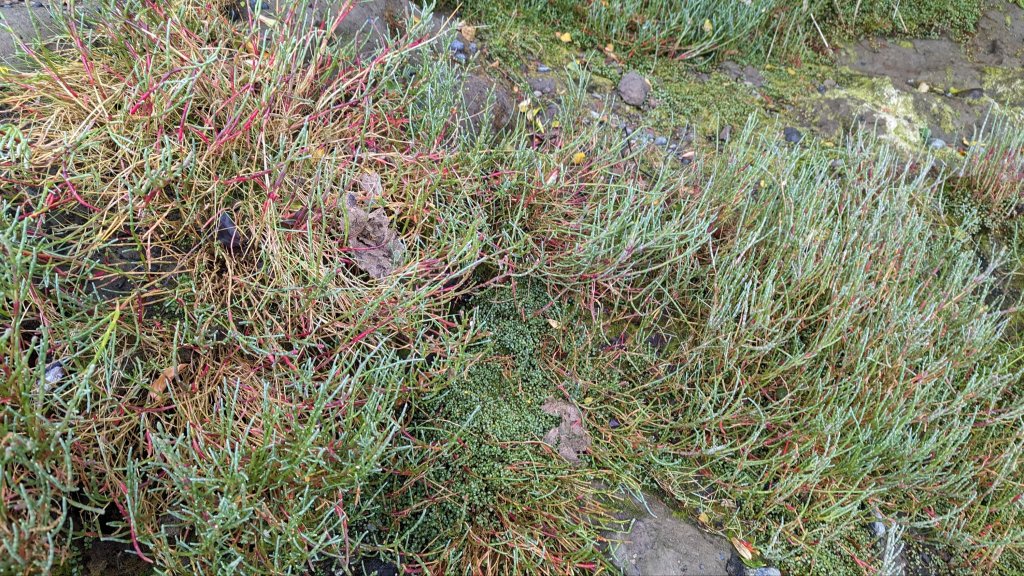


Initially we expected to stay on the island for two days, but apparently the plans had to be changed without our knowledge: The ferry back would not run for another two days, and even though Mike and Geneva had heard some more beforehand and brought an overload of groceries to share, our contribution was running low. We decided to return to our camper by the first ferry out, leaving the four friends some more time among themselves. We left at the crack of dawn of a cool foggy morning. A tender boat picked us up from the dock and brought us to the ferry waiting off shore on the open-water-side of the island. After an hour we reached the Quicavi shore where our truck was waiting for us. It had been the first time since Brazil that we slept away from our camper – and even though we had a wonderful time, it felt good to be home again.




To buy fresh supplies, we drove to Chiloé’s capital town Castro, where we found a supermarket but had a hard time finding a parking spot. We finally found a place along the waterside at the bottom of town. From there we climbed the steps up to the main street, where we walked around a bit, looking for a place to get some cash, and admire the quaint old colorful clapboard buildings – some of them on stalks, reaching all the way into the tidal inlets.
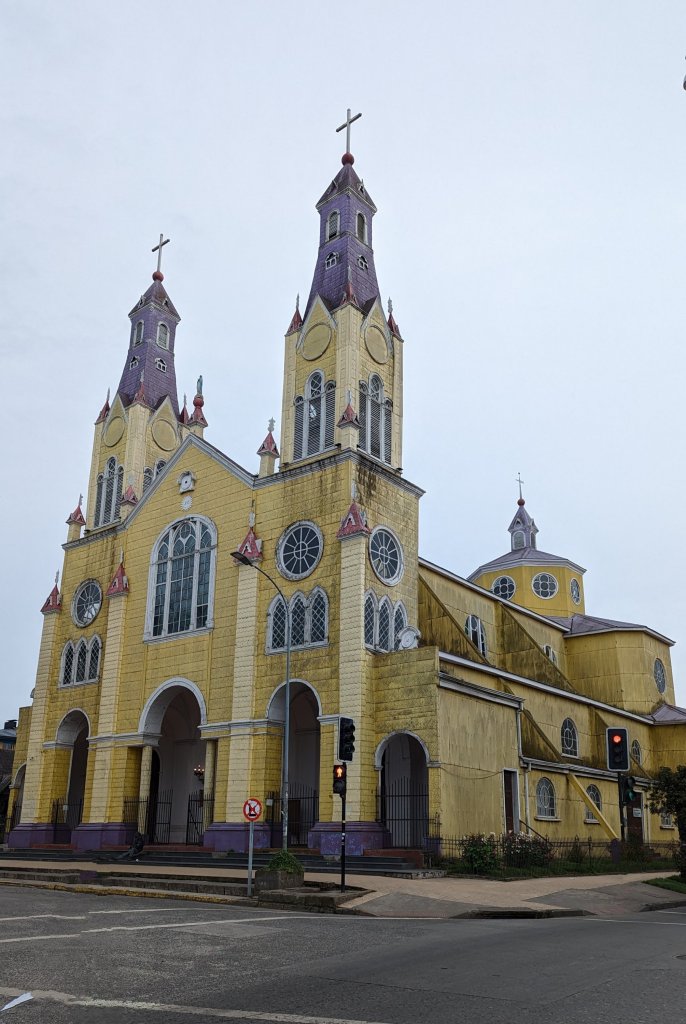

The charm of Chiloe, with rolling hills across golden fields, where charming clapboard farmhouses where the laundry is hung to dry over the fence, and villages along tranquil shores leave a special memory. We did not stay long enough, because an important appointment was calling us to Santiago. What and why? That is another story.




